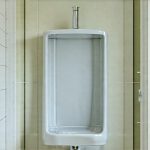The bathroom, often considered a private sanctuary, surprisingly mirrors the turbulence experienced during significant relationship shifts. It’s a space where routines are deeply ingrained, habits formed, and vulnerabilities exposed – even if only to ourselves. When a relationship undergoes major change—whether it’s deepening commitment, navigating conflict, or ultimately separating—the stability we associate with this everyday room can feel profoundly shaken. This isn’t merely about losing a shared toothbrush; it’s about the symbolic loss of shared space, routines, and the intimate knowledge that comes with long-term partnership. The bathroom becomes a microcosm of the larger emotional upheaval, reflecting our shifting identities and anxieties in unexpected ways.
The changes aren’t always dramatic outbursts or obvious distress. More often, they manifest as subtle alterations to self-care rituals, fluctuations in hygiene practices, and an altered relationship with personal space. Think about how quickly routines shift during a stressful period; the bathroom is ground zero for these shifts. It’s where we prepare for the day, attempt to soothe ourselves at night, and privately process emotions. Therefore, understanding these subtle changes within this intimate space can offer valuable insights into our emotional state and provide a roadmap for navigating challenging transitions with greater self-awareness and compassion. Recognizing that bathroom instability is often a symptom of deeper relational issues, rather than a personal failing, is the first step towards healing. Changes to bathroom pattern can be a sign of stress – https://vitagastro.com/bathroom-pattern-changes-during-vacation-adjustment/.
The Erosion of Shared Rituals & Space
The beauty of long-term relationships often lies in the shared rituals we develop – the unspoken understandings about how we use spaces like the bathroom. These routines create a sense of comfort and predictability, reinforcing our connection. However, when a relationship is changing, these rituals begin to unravel. Suddenly, morning showers become rushed or avoided altogether as one partner withdraws emotionally. Toothbrush placement shifts from side-by-side to distinctly separated, symbolizing growing distance. Even the choice of body wash or shampoo might change, reflecting an attempt at individual redefinition.
This erosion extends beyond hygiene practices. The bathroom mirror, once a shared site for morning greetings and playful interactions, may now be avoided altogether, becoming a reminder of lost intimacy. Shared toiletries are replaced with individual products, creating physical boundaries within the space. This isn’t necessarily about spite or resentment; it’s often a natural consequence of trying to reclaim individuality during a period of change. The bathroom becomes less of a shared haven and more of a segregated zone, reflecting the emotional distance growing between partners. It’s important to acknowledge this shift not as malicious behavior, but as a visible manifestation of deeper underlying issues. Understanding meal satisfaction can also help – https://vitagastro.com/stool-changes-during-lack-of-meal-satisfaction/.
The impact is amplified if the relationship involved significant interdependence. If one partner habitually helped the other with grooming routines or offered encouragement during vulnerable moments, the loss of that support can be particularly destabilizing. The bathroom then becomes a space associated with loss – a constant reminder of what has been forfeited and what may never return. Re-establishing a sense of stability requires acknowledging these losses and consciously rebuilding individual routines while respecting each other’s need for personal space. If digestive health is disrupted, consider overloaded protocols – https://vitagastro.com/bathroom-instability-from-overloaded-digestive-protocols/.
Navigating Bathroom Changes During Conflict
Conflict within a relationship inevitably spills over into even the most private spaces, including the bathroom. What might have started as a disagreement in another room can escalate during shared hygiene routines or while preparing for the day, turning mundane tasks into tense encounters. The bathroom’s enclosed nature amplifies these tensions, making it difficult to escape the conflict.
- Increased irritability during morning routines
- Passive-aggressive comments about cleanliness or personal habits
- Avoidance of shared bathroom time altogether
These behaviors are often outward expressions of deeper insecurities and resentments. It’s crucial to recognize that the issue isn’t necessarily about the toothpaste or the length of a shower; it’s about unresolved emotional issues manifesting in a seemingly trivial context. Addressing these underlying concerns requires open communication, empathy, and a willingness to compromise.
A helpful approach is to establish “bathroom boundaries” during periods of conflict. This might involve agreeing to avoid sensitive conversations while getting ready for the day or creating dedicated time slots for individual bathroom use. It’s about creating pockets of peace within a stressful situation. Communication is paramount, even if it’s simply acknowledging that both partners are feeling overwhelmed and need space. Ultimately, resolving conflict requires addressing the root causes, not just managing the symptoms in the bathroom. Stress can also cause bathroom instability – https://vitagastro.com/bathroom-instability-from-skipping-evening-meals/.
Post-Separation Bathroom Dynamics
The aftermath of a separation often brings about profound changes to bathroom routines and usage. The shared space becomes a stark reminder of what has been lost, evoking feelings of sadness, grief, and even anger. One partner may struggle with feeling like an intruder in their own home, while the other might feel overwhelmed by the void left behind.
- Increased time spent in the bathroom as a form of self-soothing
- Obsessive cleaning or redecorating as a way to exert control
- Difficulty performing basic hygiene tasks due to emotional distress
This period requires significant self-compassion and patience. It’s essential to allow yourself to grieve the loss of the relationship and create new routines that support your individual well-being. Redefining the bathroom as your space again, even if only temporarily, can be a powerful step towards healing. This might involve rearranging toiletries, adding personal touches, or simply spending time in the bathroom doing activities you enjoy – reading, meditating, or taking a long bath.
Reclaiming Personal Space & Routine
Rebuilding stability after relationship change is fundamentally about reclaiming your sense of self and establishing new routines that align with your current needs. This applies directly to the bathroom space, which should become a sanctuary for self-care rather than a source of anxiety or sadness. The process requires conscious effort and may involve revisiting long-forgotten habits or exploring new ones.
One effective strategy is to create a “bathroom reset.” This involves decluttering the space, removing shared items (if applicable), and incorporating elements that promote relaxation and well-being – candles, plants, essential oils, or soothing music. It’s about transforming the bathroom into a haven where you can reconnect with yourself and nurture your emotional state.
Furthermore, establishing consistent hygiene routines is crucial for maintaining a sense of normalcy and control. This doesn’t necessarily mean adhering to rigid schedules; it’s simply about prioritizing self-care activities that make you feel good. Experiment with different products, create a relaxing skincare routine, or take time to enjoy a leisurely bath. The goal is to rediscover the bathroom as a space for comfort and rejuvenation, rather than a reminder of what has been lost. It’s an ongoing process, but one that yields significant emotional benefits. Changes during heavy travel seasons can also impact routines – https://vitagastro.com/stool-form-changes-during-heavy-travel-seasons/. Sometimes, shifts occur due to springtime eating –https://vitagastro.com/bathroom-frequency-changes-during-springtime-eating/. Finally, consider how stool instability impacts emotional wellbeing – https://vitagastro.com/stool-instability-during-phases-of-disordered-eating/.


















